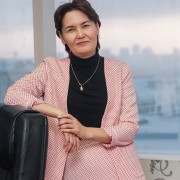Speeches Shim

East Kazakhstan is one of the largest regions in the country. It is rich with pristine natural beauty, mineral resources and thriving industries. It is also home to the highest number of prisons and people who inject drugs; both associated with increased HIV risk as well as decreased treatment retention. As of July 31, 2020 nearly 3,200 people living with HIV were registered and only 70 percent of those had received treatment. In March 2020, the local Narcology Center reported that there are around 3,500 injecting drug users. In reality, there are even more, since people avoid registering at the medical facilities due to the stigma associated with it.

Didar Zhanibekuly points to the camping bed propped against his office wall, squeezed in-between bundles of maps. “It’s for spring,” he says, when they often work throughout the night. In Kazakhstan, spring time is flood season. “Floods have a huge impact on Kazakhstan,” says Didar, Director of the Department of Hydrology at Kazhydromet.

Last year, 25-year-old Zhaniya Aldekeyeva, completed a doctoral degree in medicine. Not one to stop there, she then enrolled at Nazarbayev University to pursue a master’s in public health. Unfortunately, due to the COVID-19 pandemic, she hasn’t started classes yet. But there was work to do so she connected with her fellow Red Crescent of Kazakhstan volunteers to help prevent the virus’ spread.

Arman Dyusenbai was born in 2015. When he was six months old, his parents left him to be raised by his aunt, Shapagat Berzhigitova. At age two, Arman was diagnosed with chronic ear infections. As a result of the illness, Arman had a difficult time understanding speech and other sounds. He was unable to speak and is nearly deaf.

USAID is working with the five countries of Central Asia to accelerate a regional transition to cost effective, low emission, and climate-resilient economies. Providing clean, renewable energy and improving energy efficiency can solve issues of national and regional energy security, stability, and growing emissions. These efforts lead to a future of self-sufficiency by leveraging domestic resources and improving opportunities for cross-border trade.

Comment
Make a general inquiry or suggest an improvement.